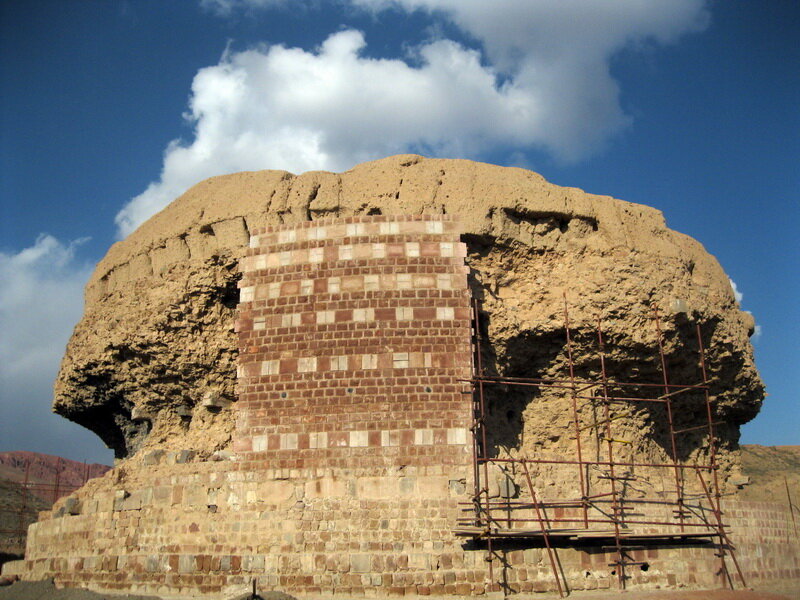Remnants of centuries-old structure found in northwest Iran

TEHRAN – Archaeologists have recently unearthed a vast centuries-old structure during excavation in Rab’-e Rashidi, a 14th-century educational complex in East Azarbaijan province, northwest Iran.
“Remnants of a vast structure, measuring some 3,600 square meters, have been found in six archaeological trenches in Rab’-e Rashidi, where an excavation and restoration project is underway,” senior Iranian archaeologist Bahram Ajorlou said on Wednesday, IRNA reported.
“The newly discovered structure is estimated to date from the 8th century AH (1299 CE – 1397 CE) to 10th century AH (1495 CE – 1591 CE) and it also bears fragments of tilework, which date back to the 8th century AH,” he explained.
The archaeologists have also discovered three stages of wall architecture, evidence of industrial activities. They have acquired some data from archaeobotanical researches, Ajorlou concluded.
The third round of excavation and restoration work is carried out by a panel of international cultural heritage experts, archaeologists, and restorers from Iran, the German Archaeological Institute, the Otto-Friedrich University in Bamberg, and the Louvre Museum in Paris.
The Cultural Heritage and Tourism Research Center in collaboration with Tabriz Islamic Art University completed the first phase of the international project to lay the groundwork for UNESCO recognition.
Archaeological speculations, geophysical surveys, 3D laser scans, and endoscopy of the ancient structure were carried out during the first phase.
Situated in the northwestern city of Tabriz, Rab’-e Rashidi includes several archaeological layers that date from Ilkhanid, Safavid and Qajar eras. It is said that students from Iran, China, Egypt, and Syria studied there under the supervision of physicians, intellectuals, scientists and Islamic scholars.
The ancient complex embraces a paper factory, a library, a hospital (Dar-al-Shafa), a Quranic center (Dar-al-Quran), residential facilities for teachers, students’ quarters and a caravanserai amongst other facilities.
Iran is considering the possible inscription of the site on the UNESCO World Heritage list by 2025.
AFM/MG
Leave a Comment